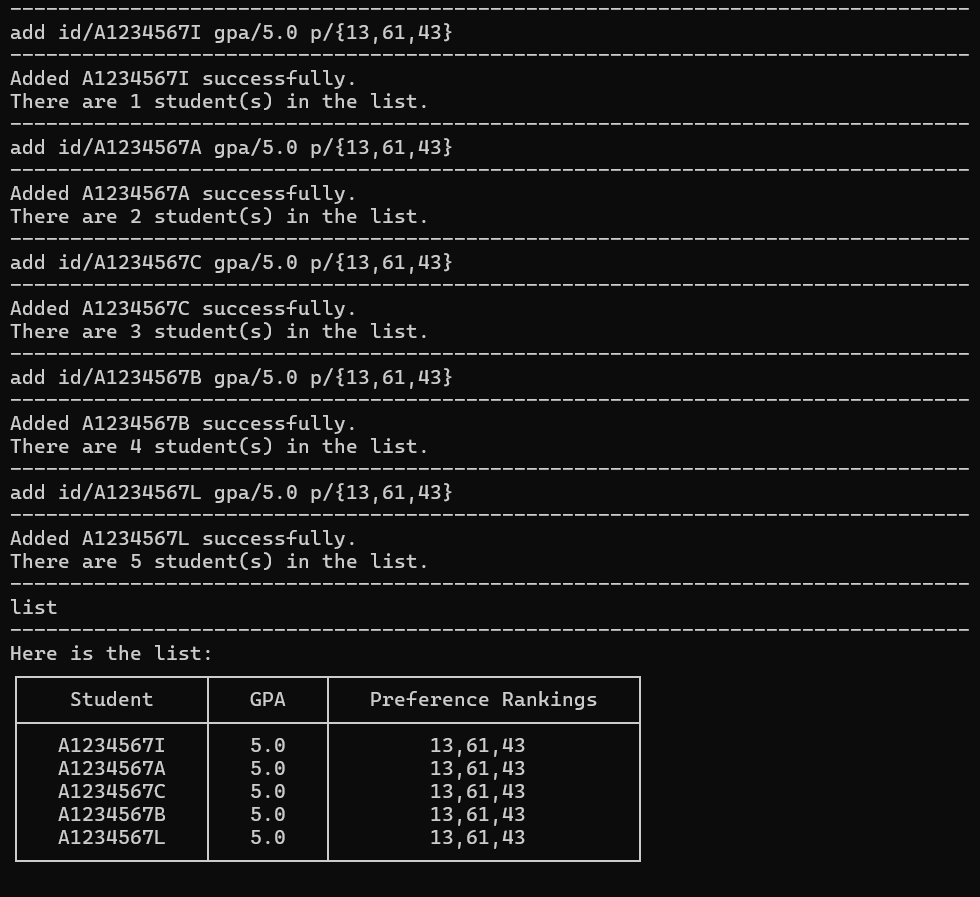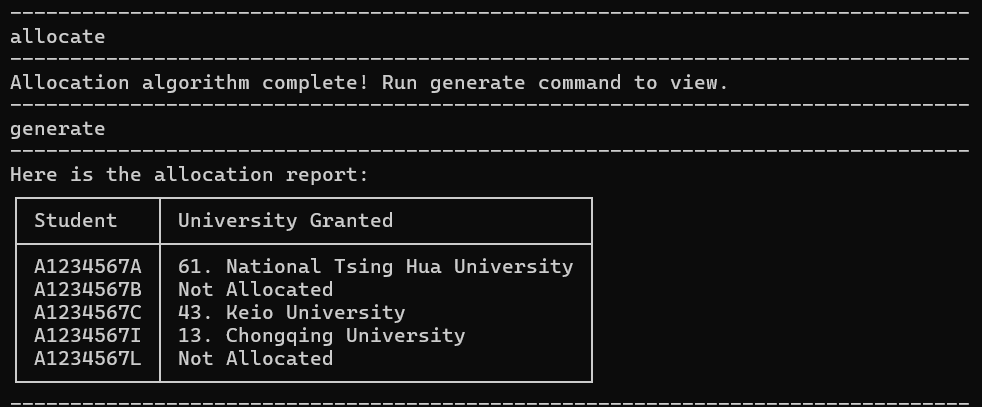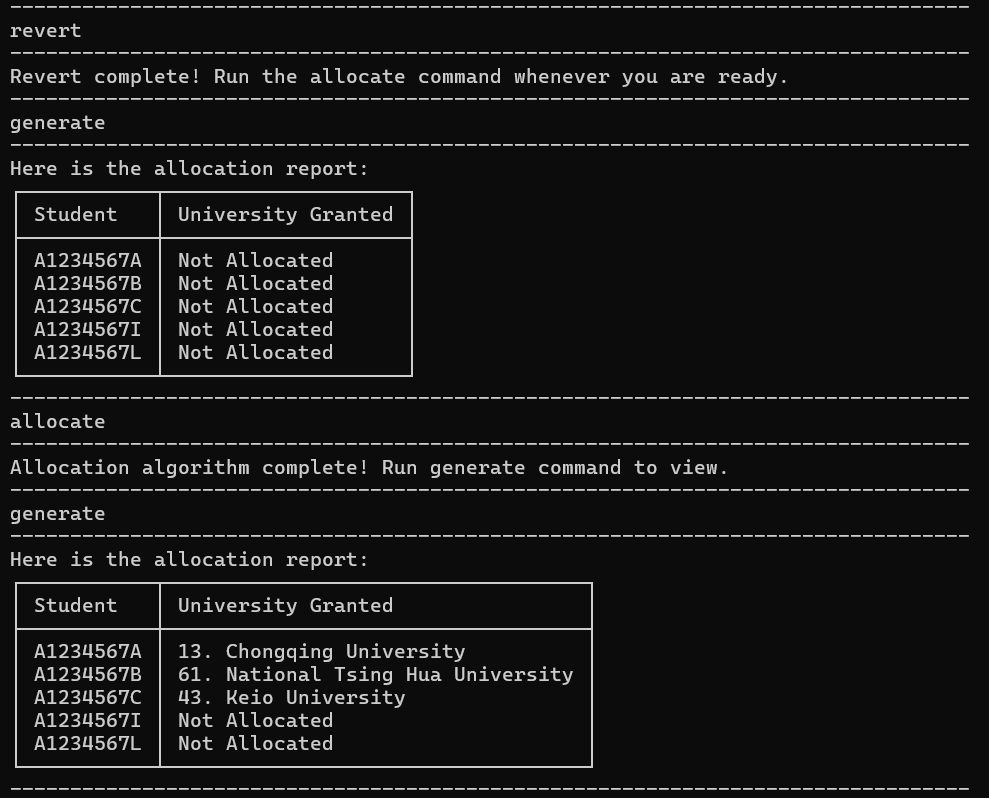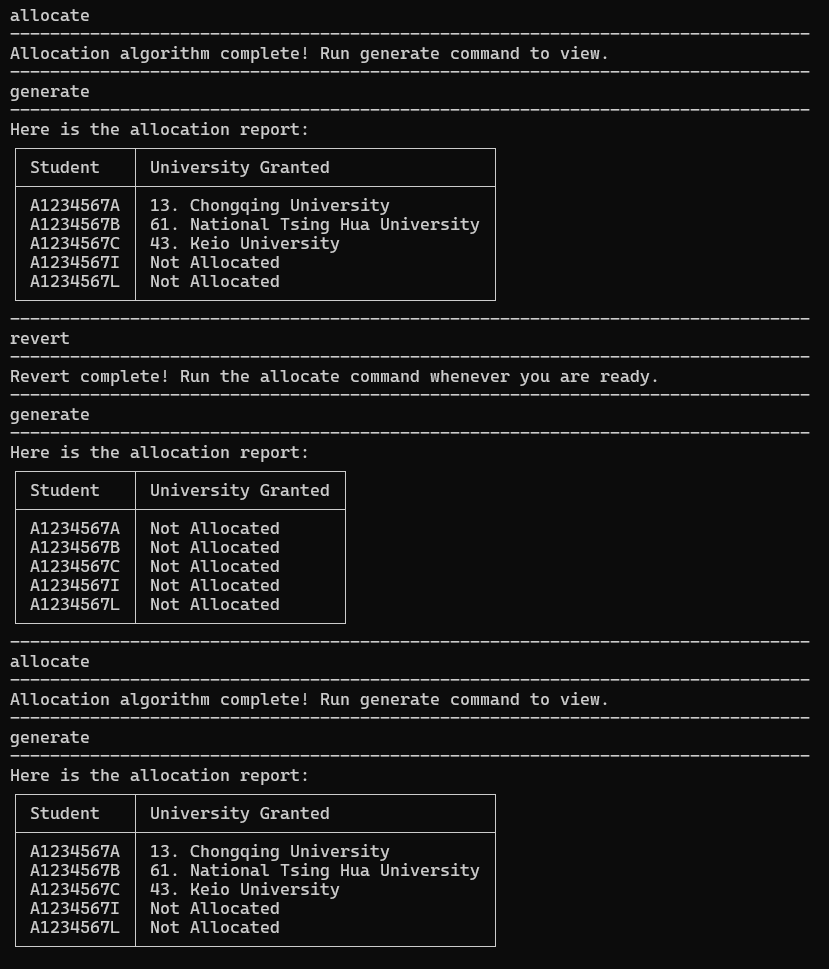Team's Response
Thanks for raising the issue. However, tester seems to misunderstand that the display order of the table has something to do with the allocation method. In fact, after running allocate command, the report generated by our program always sort all the students by alphanumerical order, which is a very natural idea and also demonstrated in the screenshot the tester provided.
That is to say, after running allocate command, it's not only that the pattern of students not being allocated seems to be one after another, on the bottom of the list, which was sorted by alphanumerical order, as tester mentioned; it's that the pattern of all students is sorted by alphanumerical order. Therefore, it's not a result of biased allocation.
As for the method of allocation, it is introduced in our UG Q&A section.

When multiple students share the same gpa and preferences, the tie breaker is their order in the student list: which is the order of input. Since we are using `Collection.sort(), its stableness could ensure that the allocation is unbiased.
Items for the Tester to Verify
:question: Issue response
Team chose [response.Rejected]
- [x] I disagree
Reason for disagreement: Image 1:

Image 2:

Image 3:

Image 4:

Group's claim: When multiple students share the same gpa and preferences, the tie breaker is their order in the student list: which is the order of input. I would like to counter their claim.
[Image 1] The list was in this random order initially (from my inputs).
[Image 2] When I allocate for the first time, the results indeed aligns with their claim.
[Image 3] However, once I revert and allocate again, the universities are allocated based on alphanumeric order, which does not support their claim. Either way, the result in this image after reallocation should show the same allocation as Image 2 if their claim is true.
[Image 4] This allocation is done after the first reallocation. As shown, the universities allocated based on alphanumeric order again. Based on my testing, reallocations done after the first allocation will always be allocated based on alphanumeric order, instead of in the order of student list.
My testing has shown that the bug of 'Method of allocation is unclear' exists. My argument that this program does not display fair automated allocation stands valid. Furthermore, students having the same GPA (not just 5.0, any other GPA values are included) is not rare, and administrators running reallocations is not uncommon, so this unfairness is a notable issue.
When given a set of students with the same GPA and preferences, reallocating and generating the results would still result in the same allocation results. Interestingly, the pattern of students not being allocated seems to be one after another, on the bottom of the list, which was sorted by alphanumerical order. Is this biased allocation? This does not seem like a fair automated allocation result generator.